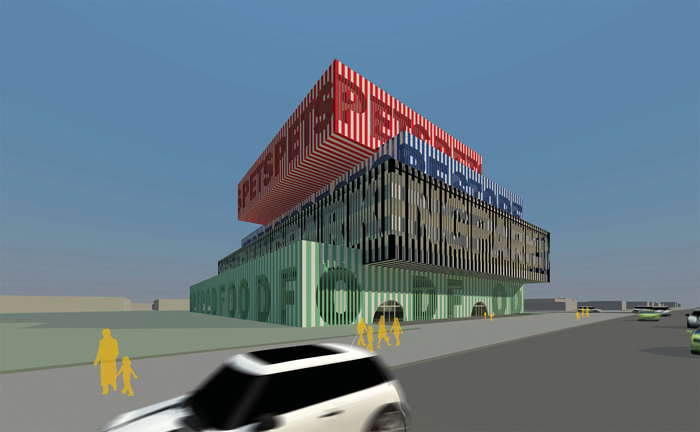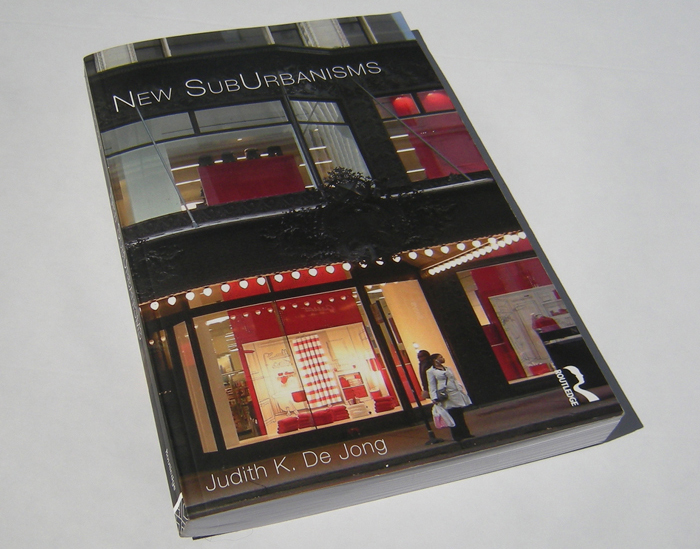Exhibitions
On February 16, Spring 2019 Curatorial Intern Wyatt Fiore attended Tamara Becerra Valdez’s printmaking workshop presented in conjunction with All have the same breath. Wyatt recounts their experience participating in the workshop and experiencing Valdez’ practice firsthand. This is the first in a two-part series examining Valdez’ practice.

Urbanism–an interest in the city–does not have a specific disciplinary home. It can reside in economics, in planning, in sociology, and in many other fields. What, then, does urbanism mean within the context of architecture? For me, urbanism has threedefinitive characteristics that shape my research agenda and determine the projects on which I work, including my work on the current shows.
Urbanism has physical form, and creates physical space, and it is materialized primarily, although not exclusively, through architecture and landscape architecture. The reciprocating relationships between architecture and the city form every metropolis, from historic to contemporary, and occur at a range of scales, from that of the individual building or project, which can (but often does not) operate as an effective agent of urban design, to that of the urban plan, which can generate individual architectural projects.

Urbanism is intellectual and cultural, and urban form, like architectural form, materializes important ideas and cultural conditions, particularly in regards to collective life. Barcelona’s current urban form, for example, traces dramatic shifts in how the idea of the city in Spanish culture has transformed over time. Its medieval center is small and tight, reflecting a prevailing idea of the city at that time as a defensive position in which internal movement was primarily by foot; small ancillary settlements sat two kilometers outside its walls, a dimensional requirement set by the military to maintain an empty, defensive zone. In 1860, Cerda’s Plan of Barcelona provided a means of growth for the city through the introduction of a new, expandable grid that filled the adjacent plane and knit together the old center and its outlying towns. Notably, this grid was in stark formal contrast to the old city, because the Cerda plan embodied an idea about modernization for quality of life. Dimensions such as road widths and building heights, and key architectural conditions such as the internal courtyard, were carefully determined to provide collective space, light, and air to the new perimeter housing blocks that gave still distinctive form to the new district. More recently, the program of new public spaces that was initiated in the 1980s speaks to the emergence of a city of leisure, particularly evident in the on-going transformation of Barcelona’s once industrial waterfront into a continuous, contemporary collective realm of beaches, marinas, parks, and public buildings.
Urbanism is inherently projective and speculative because it frames a vision of the future, whether near (5+ years) or far (25+ years). Projecting the future of the city is important because it is seldom clear in the present what cities may become over time, and because significant urban change often happens surprisingly quickly. In 1950, few imagined that thriving Detroit, the fifth largest city in the U.S. with 1.849 million people, would by 2009 see its population collapse to 910,921 and its primary conversation become how to manage vacancy and shrinkage. Conversely, in the hot, humid, flood-prone, sleepy Houston of 1940, in which 384,514 people lived, few foresaw it would quadruple its population in 40 years (to 1.595 million people), producing the archetypical form of the city of automobility.
Grounded in this fundamental understanding, much of my recent work has focused on the opportunities for design innovation in architectures and urbanisms of mass culture. For me, the “urban” is not defined solely by the forms of the traditional city, exemplified by historic Paris or Boston; rather, the urban is also a broader condition that is looser, messier, and more in-between, seen most vividly in newer places like Atlanta. While the urban remains a shaper of both individual and collective life, the forms and spaces in which that happens have also significantly changed, and are now likely to be the shopping mall, the parking lot, or similar. Because these more open formal and spatial patterns have little obvious order, and because the architecture is usually banal, these conditions are easily dismissed. There is significant value in understanding these landscapes, however, as they not only are the largest and fastest growing parts of the metropolis, but also are evolving extremely quickly. Thus they are the primary locales of potentially innovative new architectures, new urbanisms, new audiences, and new ways of life.
All photos from Tamara Becerra Valdez’s COPIES AND TRANSFERS Printmaking Workshop on February 16, 2019 at Gallery 400. Photos by Kiam Marcelo Junio.

